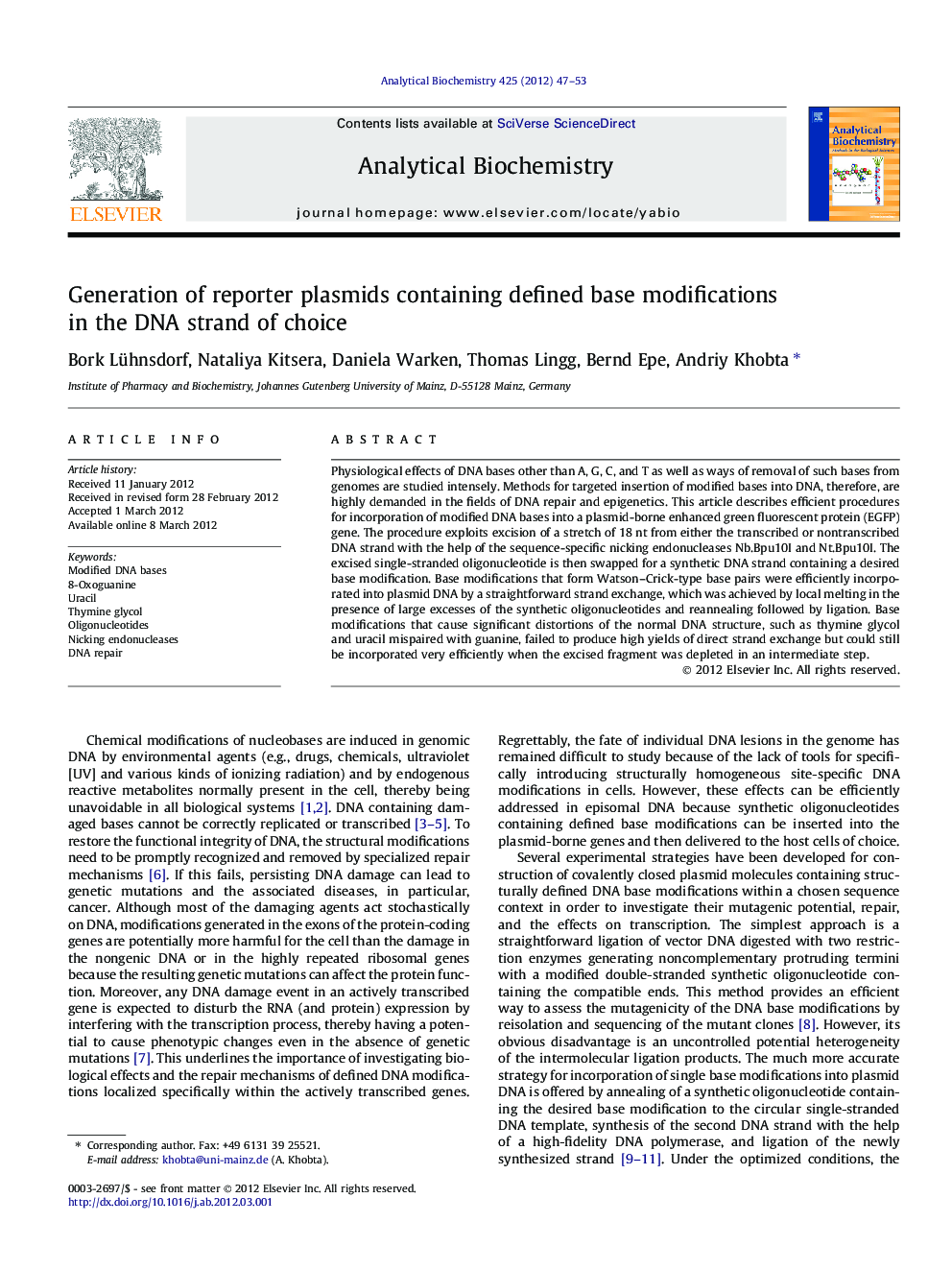| Article ID | Journal | Published Year | Pages | File Type |
|---|---|---|---|---|
| 1174109 | Analytical Biochemistry | 2012 | 7 Pages |
Physiological effects of DNA bases other than A, G, C, and T as well as ways of removal of such bases from genomes are studied intensely. Methods for targeted insertion of modified bases into DNA, therefore, are highly demanded in the fields of DNA repair and epigenetics. This article describes efficient procedures for incorporation of modified DNA bases into a plasmid-borne enhanced green fluorescent protein (EGFP) gene. The procedure exploits excision of a stretch of 18 nt from either the transcribed or nontranscribed DNA strand with the help of the sequence-specific nicking endonucleases Nb.Bpu10I and Nt.Bpu10I. The excised single-stranded oligonucleotide is then swapped for a synthetic DNA strand containing a desired base modification. Base modifications that form Watson–Crick-type base pairs were efficiently incorporated into plasmid DNA by a straightforward strand exchange, which was achieved by local melting in the presence of large excesses of the synthetic oligonucleotides and reannealing followed by ligation. Base modifications that cause significant distortions of the normal DNA structure, such as thymine glycol and uracil mispaired with guanine, failed to produce high yields of direct strand exchange but could still be incorporated very efficiently when the excised fragment was depleted in an intermediate step.
